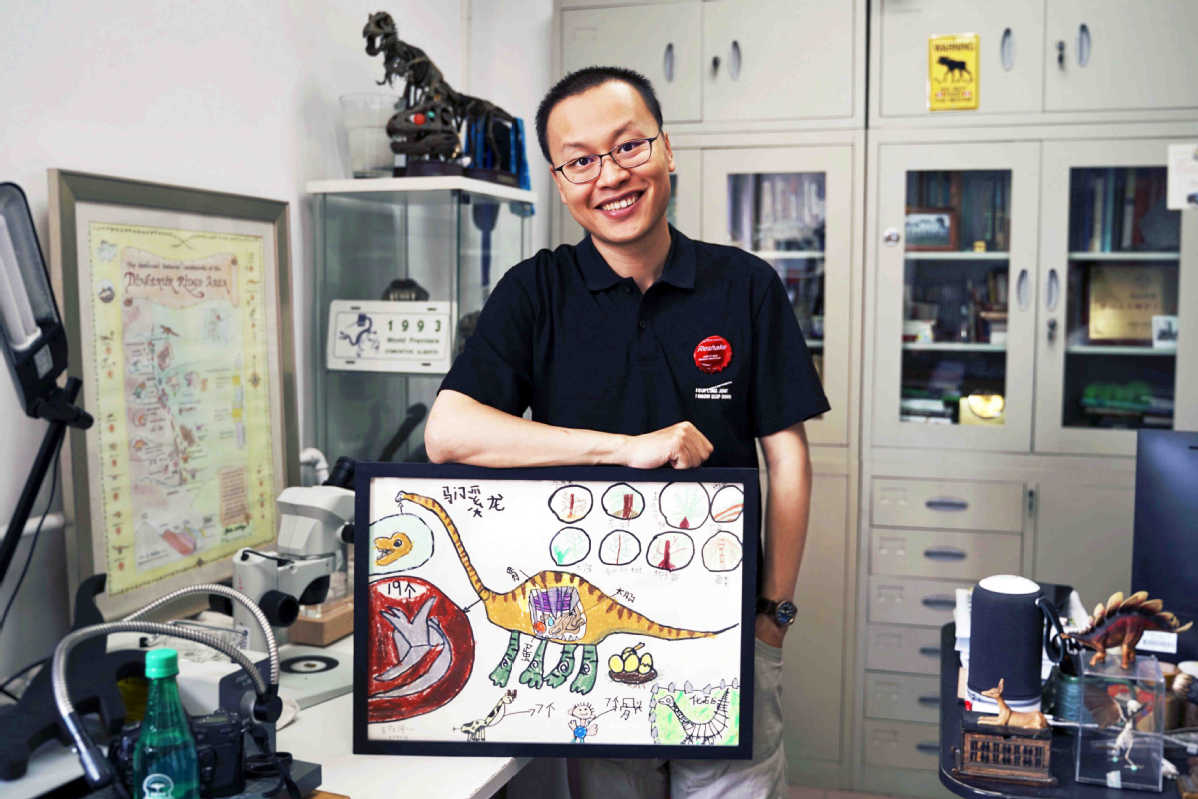Paleontologist's passion stays rooted in the past
Xinhua | Updated: 2021-03-22 09:10

Xing Lida, 39, spends his life looking for traces of dinosaurs that went extinct more than 60 million years ago.
Discovering any trace always excites the youthful paleontologist. He once found fossils with footprints of a dinosaur making a U-turn, the world's first evidence of such a maneuver. He was the first to identify tracks of a swimming theropod in China. And he made a mind-blowing find of parallel tracks left by dromaeosaurs in one site, indicating that the dinosaurs, which were previously thought to be solitary, lived in groups.
His latest discovery is a group of 80 million-year-old tracks left by at least eight dinosaurs in Fujian province. Such a diverse set of tracks will be part of his map of ancient dinosaur habitats across the country.
An associate professor at China University of Geosciences, Xing spends seven months a year living in rough terrain and weather to find tracks and fossils of dinosaurs scattered around the world.
Dinosaurs inhabited the world for some 160 million years. Studying them can help explain the evolution of life on Earth or answer questions about where humans come from and where we might go, Xing said.
"These are the ultimate questions of paleontology, the historical mission of all humanity and the purpose of my research," he said.
Xing's blockbuster discovery is a feathered dinosaur tail preserved in a palm-sized piece of amber.
In 2011, while studying in Canada for his master's in paleontology, he learned that dinosaur feathers could be preserved in fossil tree resin. He became a frequent traveler to amber-rich Myanmar, trekking by car, boat and elephant to amber markets.
One day in June 2016, Xing came across a vendor who said there was a special piece of amber with "plants" in it. After taking a close look, Xing believed it contained the remains of an ancient bird or a dinosaur. The amber set his heart racing, and he immediately took it home for research.
"When I showed the amber sample to my foreign colleagues, they were surprised," Xing recalled.
A team of more than 10 Chinese and foreign experts was set up to study it. After CT scans and microscopic analysis, they ascertained that the fossilized feathered tail, including bones, soft tissue and even feathers, came from a tiny dinosaur that lived about 99 million years ago.
























